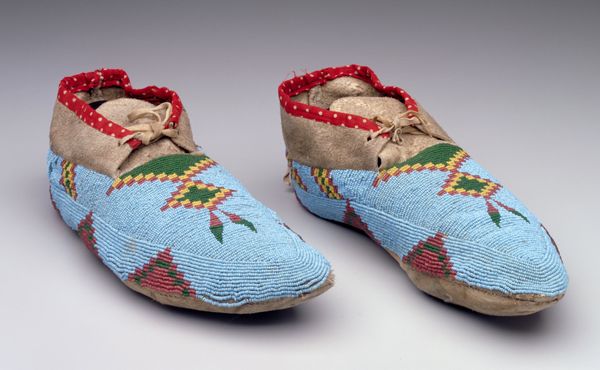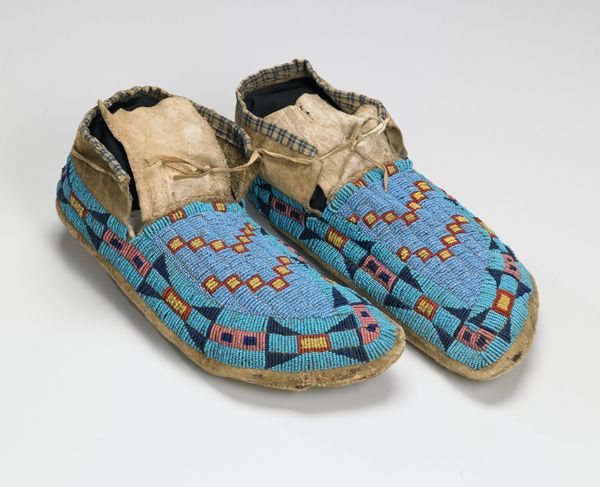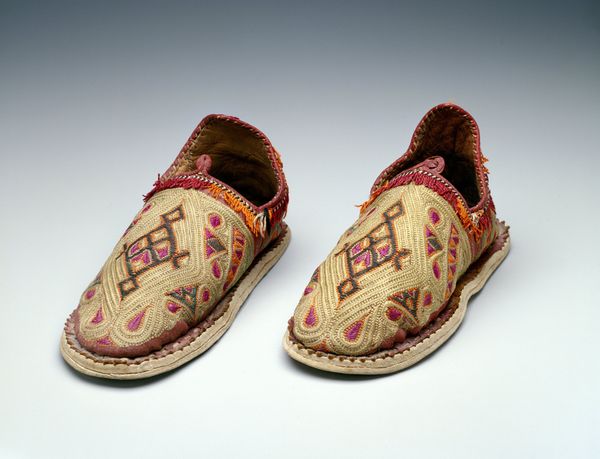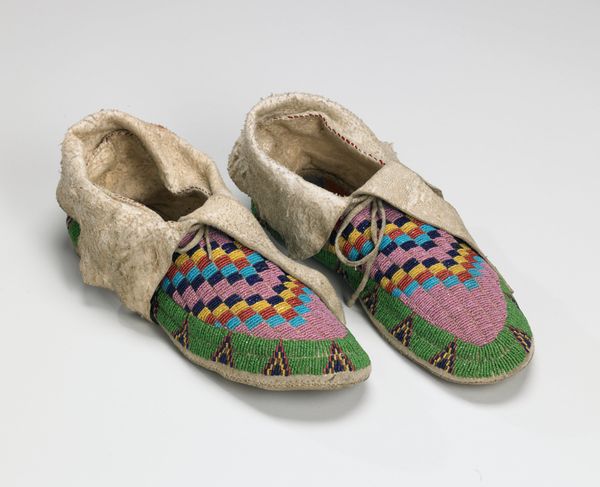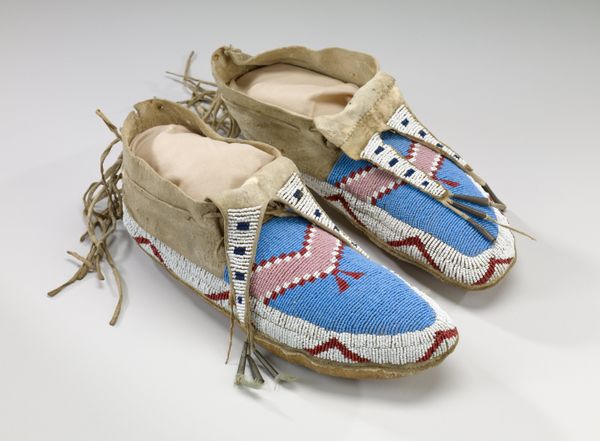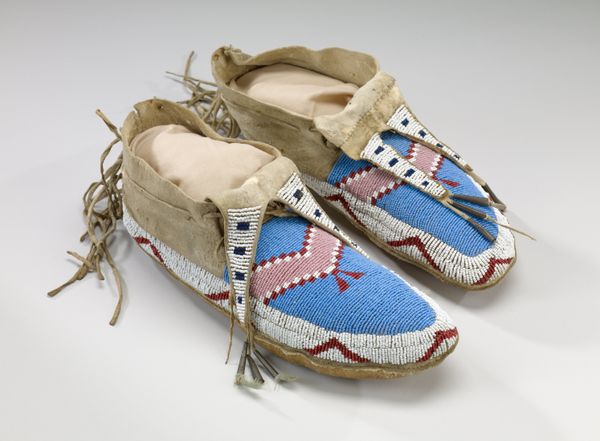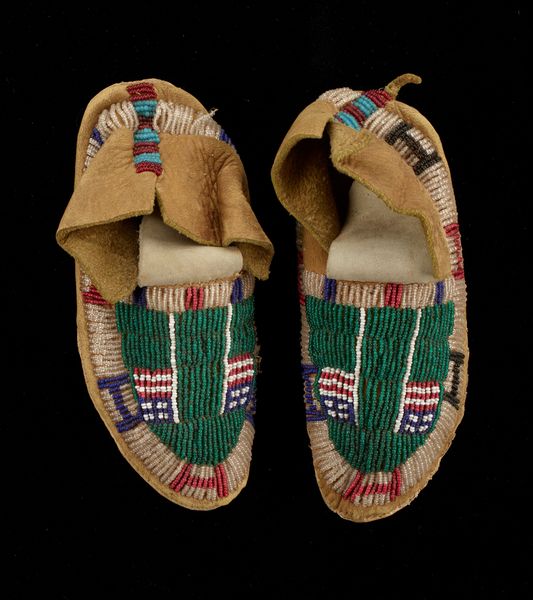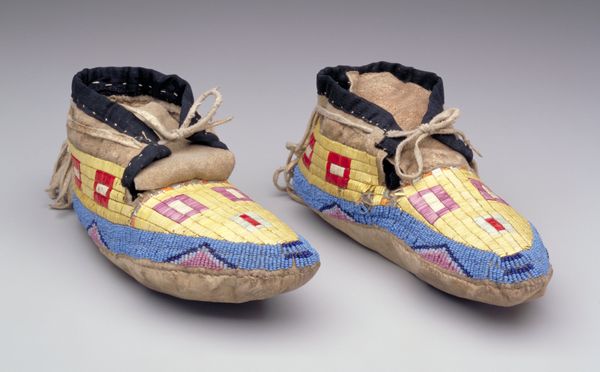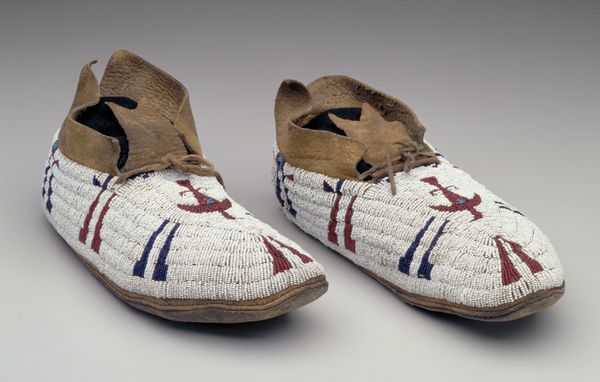
fibre-art, textile
#
fibre-art
#
textile
#
geometric
#
decorative-art
#
indigenous-americas
Dimensions: 4 1/8 x 4 7/16 x 11 7/8 in. (10.48 x 11.27 x 30.16 cm)
Copyright: Public Domain
Editor: These moccasins, made by the A'aninin or Gros Ventre people around 1880 to 1910, are so intricate! I’m struck by the patterns made from the tiny beads, like a visual language I don't quite understand. What stories or meanings are woven into their design? Curator: They're powerful cultural artifacts, aren't they? Consider how the imagery may have functioned as both personal adornment and a symbolic representation of tribal identity. The colors themselves – the sky blue, the earth tones – how might they reflect the A’aninin worldview? Editor: That's interesting. The geometric shapes too - the triangles and linear arrangements... are they purely decorative, or do they carry deeper significance? Curator: Very insightful question. Often in Indigenous art, geometric patterns are far from mere decoration. Triangles, for instance, can represent tipis, mountains, or even abstract spiritual concepts depending on the cultural context. And what do you make of the directional orientation of these patterns? The placement… how it emphasizes the movement of the wearer? Editor: Hmm… It almost feels like the designs are meant to empower the wearer on their journey, physically and perhaps spiritually. Do we know if only specific individuals or groups were allowed to wear moccasins with certain designs? Curator: Exactly! Certain motifs and materials might have been reserved for specific genders, age groups, or individuals holding particular status within the tribe. So the moccasins, far from being simple footwear, can act as a visible marker of social identity. Considering that these were made during a time of immense pressure from colonial expansion, how might the act of creating something like this function as an act of resistance or cultural preservation? Editor: It makes me appreciate how much more than adornment this represents, the continuation of cultural memory in a beautiful, wearable form. Thank you for expanding my understanding. Curator: And thank you for helping me see the ever-evolving power that these enduring symbols can carry.
Comments
minneapolisinstituteofart about 2 years ago
⋮
These fully beaded moccasins were worn for special occasions, like ceremonies, pow-wows, and celebrations. They would be used for "show" and illustrate the skill of the person who made them. Although moccasins with fully beaded soles have erroneously been called "burial moccasins", implying that the deceased would wear them only in death, historical photographs show that living people wore them. In a traditional setting, the viewer would be able to see the soles when the wearer rode a horse or was sitting down with his legs out in front. These rare moccasins are of exceptional quality, illustrated by the use of color and the techniques of applying the beads.
Join the conversation
Join millions of artists and users on Artera today and experience the ultimate creative platform.


